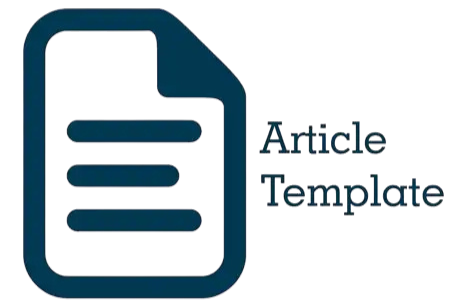Enhancing Physics Learning in Sekolah Indonesia Kuala Lumpur (SIKL) by Utilizing Artificial Intelligence
DOI:
https://doi.org/10.21580/dms.2024.241.19315Keywords:
artificial intelligence, canva, chat GPT, physics problems, physics learning, presentation mediaAbstract
The surge in digital learning technology, particularly Artificial Intelligence (AI), has reshaped education. This community service initiative at Sekolah Indonesia Kuala Lumpur in Malaysia targets AI training to innovate physics education. The multifaceted approach encompasses preparation, implementation, and evaluation stages, employing methods like Focus Group Discussions, training sessions, and mentoring. AI plays a pivotal role in assisting students with assignments, analyzing physics problems, and creating presentation media for school tasks, utilizing applications such as Canva+ChatGPT and Google Slides+ChatGPT. Training outcomes at Sekolah Indonesia Kuala Lumpur showcase participants' proficiency in AI-driven presentation media, achieving an impressive average score of 84.67. Among 27 participants, only one fell short of the 75-point passing criteria. To maximize AI's role in physics learning, ongoing implementation and support are crucial in subsequent activities.
Downloads
References
Bruneau, P., Wang, J., Cao Bee, L. A., & Hana Truong, V. (2023). The Potential of ChatGPT to Enhance Physics Education in Vietnamese High Schools. Jounal Physics Education, 1–8. https://chat.openai.com/
Galindo-Domínguez, H., Delgado, N., Losada, D., & Etxabe, J.-M. (2024). An analysis of the use of artificial intelligence in education in Spain: The in-service teacher’s perspective. Journal of Digital Learning in Teacher Education, 40(1), 41–56.
Istikomah, I., Arsini, A., Saputri, A. A., Fariyani, Q., Herseptianingrum, R., Jasuri, J., & Susilawati, S. (2023). Improving the Teachers Skills in Semarang City and Surrounding Areas in Using PhETSimulations Application-Based Virtual Laboratories. DIMAS: Jurnal Pemikiran Agama Dan Pemberdayaan, 23(October), 299–312. https://doi.org/10.21580/dms.2023.232.14403
Kieser, F., Wulff, P., Kuhn, J., & Küchemann, S. (2023). Educational data augmentation in physics education research using ChatGPT. Physical Review Physics Education Research, 19(2), 20150. https://doi.org/10.1103/physrevphyseducres.19.020150
Nurahman, A., & Pribadi, P. (2022). Pemanfaatan kecerdasan buatan pada media pembelajaran berbantuan google assistant: penelitian tindakan kelas pada materi Hukum Newton. Jurnal Genesis Indonesia, 1(01), 24–32.
Olatunde-Aiyedun, T. G., & Hamma, H. (2023). Impact of artificial intelligence (AI) on lecturers’ proficiency levels in MS PowerPoint, Canva and Gamma in Nigeria. … in Nigeria. Horizon: Journal of …, 1–16. https://papers.ssrn.com/sol3/papers.cfm?abstract_id=4533793%0Ahttps://www.researchgate.net/profile/Tope-Olatunde-Aiyedun/publication/372956514_Impact_of_Artificial_Intelligence_AI_on_Lecturers%27_Proficiency_Levels_in_MS_PowerPoint_Canva_and_Gamma_in_Nige
Ukoh, E. E., & Nicholas, J. (2022). AI Adoption for Teaching and Learning of Physics. International Journal for Infonomics, 15(1), 2121–2131. https://doi.org/10.20533/iji.1742.4712.2022.0222
West, C. G. (2023). AI and the FCI: Can ChatGPT Project an Understanding of Introductory Physics? 1–13. http://arxiv.org/abs/2303.01067
Zheng, C., Wang, D., Wang, A. Y., & Ma, X. (2022). Telling Stories from Computational Notebooks: AI-Assisted Presentation Slides Creation for Presenting Data Science Work. Proceedings of the 2022 CHI Conference on Human Factors in Computing Systems. https://doi.org/10.1145/3491102.3517615
Downloads
Published
Issue
Section
License
Copyright
The copyright of the received article shall be assigned to the journal as the publisher of the journal. The intended copyright includes the right to publish the article in various forms (including reprints). The journal maintains the publishing rights to the published articles. Therefore, the author must submit a statement of the Copyright Transfer Agreement.*)
Licensing

This work is licensed under a Creative Commons Attribution-ShareAlike 4.0 International License.
In line with the license, authors are allowed to share and adapt the material. In addition, the material must be given appropriate credit, provided with a link to the license, and indicated if changes were made. If authors remix, transform or build upon the material, authors must distribute their contributions under the same license as the original.
_______
*) Authors whose articles are accepted for publication will receive confirmation via email and send a Copyright Transfer Agreement.









